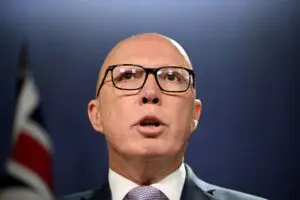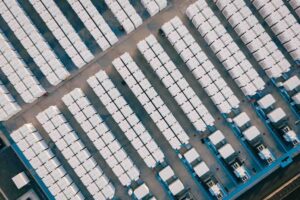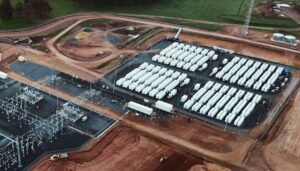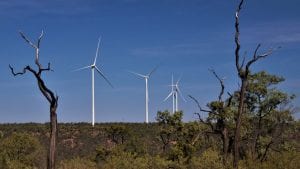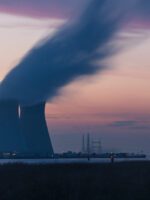If Tony Abbott wants to cripple the Australian renewable energy industry – as many people believe – he can achieve his aims without doing anything at all.
One of the tragedies of Australia’s large scale renewable energy industry is that it has an excellent policy in place. But such is the level of uncertainty about the future of that policy, the industry cannot move forward.
This uncertainty, as we have written before, is the most powerful weapon against renewables at the disposal of the fossil fuel incumbents and their protectors in the Abbott conservative government. (See our report on Christine Milne’s speech against the Abbott “puppeteers” here).
As Bloomberg New Energy Finance reported last week, this has already had a devastating impact on the industry. No new projects have been financed since the end of 2012, and just $44 million was spent in the first half of this year. The industry has effectively ground to a halt (see graph below).
 That, however, reflects the impact on the industry that the Abbott policy environment has already had. What’s of greater concern to the future of thousands of jobs and billions of dollars of investment is the impact that decisions – or non decisions – will have on future investment.
That, however, reflects the impact on the industry that the Abbott policy environment has already had. What’s of greater concern to the future of thousands of jobs and billions of dollars of investment is the impact that decisions – or non decisions – will have on future investment.
BNEF’s Kobad Bhavnagri noted in a presentation at the Clean Energy Week conference in Sydney that few projects will be financed or commissioned while there is uncertainty about the fate of the renewable energy target.
That is pretty much agreed across the industry, and understood by most politicians. Even if the cross-benchers – the Palmer United Party – managed to prevent Abbott from cutting the RET, as Abbott’s RET Review panel is widely expected to recommend, that protection lasts only to 2016.
That is probably not enough time to remove the uncertainty that will cripple the ability to sign power purchase agreements and obtain finance.
Clive Palmer may have changed the narrative around renewables, and given the Abbott government pause to reflect, but he has not yet provided a clear path to investment. At best, it is a stay of execution.
“There will not be clarity on what the policy will be until the next election,” Bhavnagri says. “Financiers and developers will spend money, but only on projects that can operate on the least worst scenario.”
But there is a greater problem that the industry has it has not yet grasped, Bhavnagri says, and that is the impact of the removal of the carbon price. He calls it “Abbott’s RET Curse.”
He says even if the 41,000GWh target was retained, and long term certainty provided, the removal of the carbon price will make it difficult to obtain financing for wind and solar farms from financial institutions.
That’s because the carbon price and the RET were designed to work together. If the carbon price is removed, then there is a massive shortfall in revenue when the certificates issued under the RET expire in 2030 – as this graph below suggests.
That cliff fall in revenue in the graph to the right could limit the extent of financing to 10 years at most. That will make it difficult for many of these projects to get away.
“Without the carbon price, it is going to be hard to finance,” Bhavnagri says. “Without some modification to the RET (extending the life of certificates out further), we will face a problem where financing for projects is hard to close.”
Right now, there seems to be no appetite within the RET panel to make such changes.
Bhavnagri says the clean energy industry is likely to face continual uncertainty. A federal policy malaise could hamper large-scale investment until at least the next election.
“If the government’s position is to change the RET, investments are unlikely to be forthcoming. Investors are likely to delay decisions until it is clear which party will hold government in the next parliament, and what their position on the RET is (protecting against the risk of future changes).
“At best, investments are only likely to be made up to the worst-case level of the target in order to manage policy risk. Even though the current target will continue rising, project commitments can be delayed as the market contains enough banked LGCs to last until 2017.”


